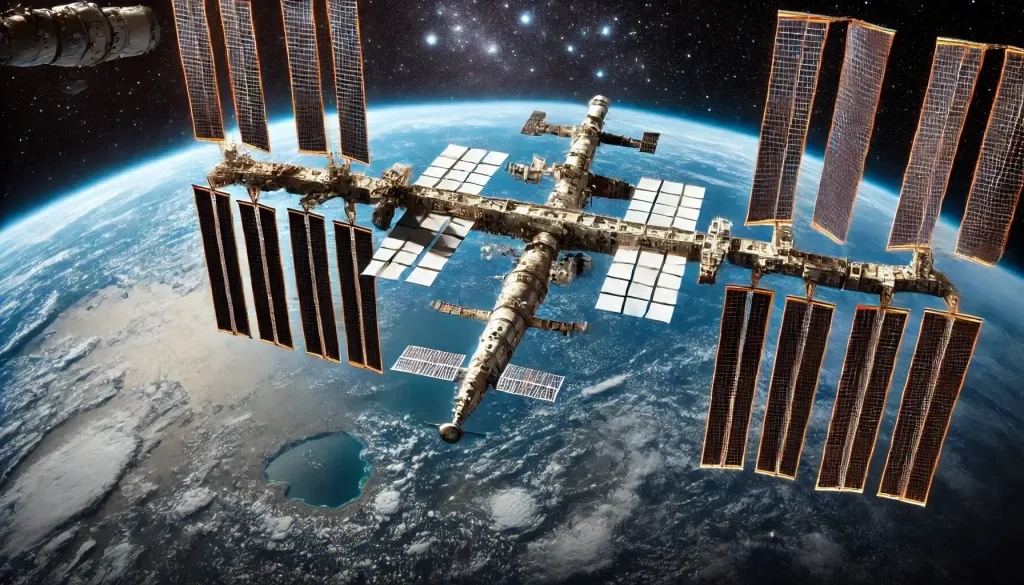
You may be aware that astronauts aboard the International Space Station age a bit slower than humans on planet Earth. This phenomenon, referred to as time dilation, is a real-world result of Einstein’s theory of relativity, which is a foundational idea for understanding world lines and time warps. These notions, once the stuff of science fiction, are now the foundation of contemporary physics, revealing deep truths about how our universe functions.
World lines chart an object’s voyage through the four-dimensional forays of spacetime, while time warps explain how fundamental objects like stars and black holes warp this fabric, ripping the seam and distorting the flow of time itself. These concepts range from guiding GPS satellites, to inspiring major studio films such as Interstellar, bridging the divide between abstract theory and concrete reality.” In this article, we’ll explore world lines and time warps, their historical origins, and their implications for technology and cosmology.
Table of Contents
Main Information
The Concept of World Lines

World lines are a way of imagining an object’s path through spacetime by intertwining the three dimensions of space with the fourth dimension of time. It’s like plotting a cross-country road trip on a map; a world line does the same for particles, planets or people, showing where they go but also when they do.
- Mathematical Basis: In 1908, mathematician Hermann Minkowski rephrased Einstein’s special relativity as a geometric framework, wherein spacetime events are points in four-dimensional space. A world line is then the curve joining these points.
- Examples:
- A resting object on Earth possesses a vertical world line in spacetime.
- A spaceship going at almost light speed traces out a curved world line, with time dilation.
Understanding Time Warps
Time warps arise from Einstein’s general relativity (1915), which posits that mass and energy curve spacetime. This curvature dictates how objects move and how time flows.
- Gravitational Time Dilation: Time passes more slowly in stronger gravitational fields. For instance, time passes slightly faster on a mountain peak than at sea level.
- Extreme Cases: In black holes, spacetime is curved so strongly that time appears to be at a standstill at the event horizon—a feature dramatized in movies like Interstellar.

Historical Evolution: From Newton to Einstein
- Newtonian Physics: Isaac Newton had considered time to be absolute, progressing at an equal rate throughout the universe. Space and time were independent, static stages.
- Einstein’s Revolution:
- Special Relativity (1905): Combined space and time, brought in spacetime, and the speed of light as a universal speed limit.
- General Relativity (1915): Defined gravity as spacetime curvature, leading the way to the understanding of time warps.
Modern Applications and Implications
- GPS Technology: Satellite clocks must account for time dilation (both due to their orbital speed and Earth’s gravity) in order to remain accurate. GPS without relativity would mislead users by kilometers per day.
- Gravitational Wave Astronomy: Instruments like LIGO can measure spacetime ripples from colliding black holes, validating Einstein’s predictions.
- Theoretical Frontiers: Concepts like wormholes (hypothetical shortcuts through spacetime) and the ER=EPR conjecture (linking wormholes to quantum entanglement) push the physics.
Advantages and Disadvantages
Benefits of Studying World Lines and Time Warps
Technological Advances:
GPS system corrections by relativistic techniques enable global navigation precision.
Spacetime curvature studies aid in quantum computer and cosmology research.
Cosmological Insights:
Black hole and Big Bang understanding rely on spacetime geometry.
Gravitational wave observation offers new ways of seeing the universe.
Sci-Fi and Cultural Influence:
Realistic physics is used in films like Interstellar and Contact to test philosophical ideas on time and existence.
Cons and Challenges
Theoretical and Practical Constraints:
Creating navigable wormholes would require exotic matter with negative energy—a yet-to-be-observed substance.
Paradoxes of time travel (e.g., the grandfather paradox) violate logical consistency.
Energy Requirements:
The Alcubierre “warp drive,” which is theoretically able to warp spacetime for faster-than-light travel, needs energy in the form of a planet’s mass.
Ethical Issues:
Time travel, if it were possible, would disrupt historical timelines or potentially serve as a weapon.
Comparative Analysis: While Newtonian physics is sufficient for day-to-day mechanics, relativity’s approach is necessary for high-precision technologies and cosmic phenomena. However, reconciling relativity with quantum mechanics remains one of science’s greatest challenges.
Conclusion
World lines and time warps aren’t abstract concepts—keys to the universe’s ultimate secrets. From Einstein’s revolutionary thoughts to the most recent gravitational wave findings, these ideas continue to mold our reality. The shortcomings—containing exotic matter or resolving time paradoxes—cast a shadow, but the payoff—interstellar travel, unified physics, and exploration of the cosmos—is boundless.
With our predecessors’ shoulders as our platforms, Einstein’s and Hawking’s, we venture into new grounds by marrying relativity to quantum mechanics with possible birth to quantum gravity. The world lines and time warps for now speak to the universe that spacetime is a dynamic player of a cosmic stage and not mere set.
You Might like
List of Top 10 Geography Articles
List of Top 10 Culture Articles
FAQs
Can we travel through time in world lines?
Yes, but only forward. Time dilation could potentially cause astronauts or travelers traveling at very high speeds to advance through time compared to the Earth. Backing up through time (a science fiction cliché) is however still purely theoretical, involving exotic physics such as closed timelike curves
How is time warp different from time dilation?
Time dilation is the difference in time elapsed between observers (by speed or gravity). Time warp is a term for localized spacetime curvature, typically caused by massive objects.
Can time warps happen on Earth?
Small time warps happen everywhere due to the mass of Earth, but they’re too small to notice without instruments. GPS satellites must account for these tiny effects to function properly.
How do world lines affect daily life?
Indirectly, via technology such as GPS. Directly, they’re below human scales but important to comprehend cosmic phenomena such as supernovae or black hole collisions.
What are the time travel ethical implications?
Theoretical time travel questions changing the past, consent, and responsibility. The majority of physicists contend that it’s impossible or limited by paradox-mitigation mechanisms (e.g., the Novikov self-consistency principle)
By weaving together history, theory, and real-world applications, this exploration of world lines and time warps illuminates humanity’s quest to master spacetime—a journey as thrilling as the cosmos itself.

Time dilation and its effects on astronauts and technology like GPS are truly fascinating. The idea that time can warp due to speed or gravity opens up endless possibilities for understanding the universe. While traveling back in time remains theoretical, it’s intriguing how physics grapples with concepts like closed timelike curves. Could mastering spacetime manipulation eventually become a reality for humanity?
The concept of time dilation is fascinating, especially how it affects astronauts traveling at high speeds. It’s incredible to think that GPS satellites must account for tiny time warps caused by Earth’s mass. Theoretical time travel raises deep questions about changing the past and responsibility. Exploring spacetime through history and science feels like a journey into the unknown. Do you think humanity will ever achieve practical time travel?